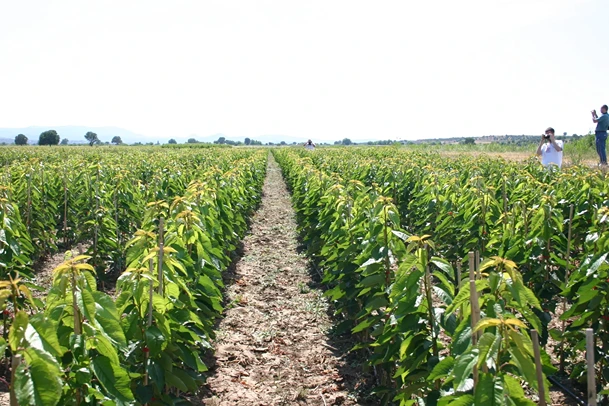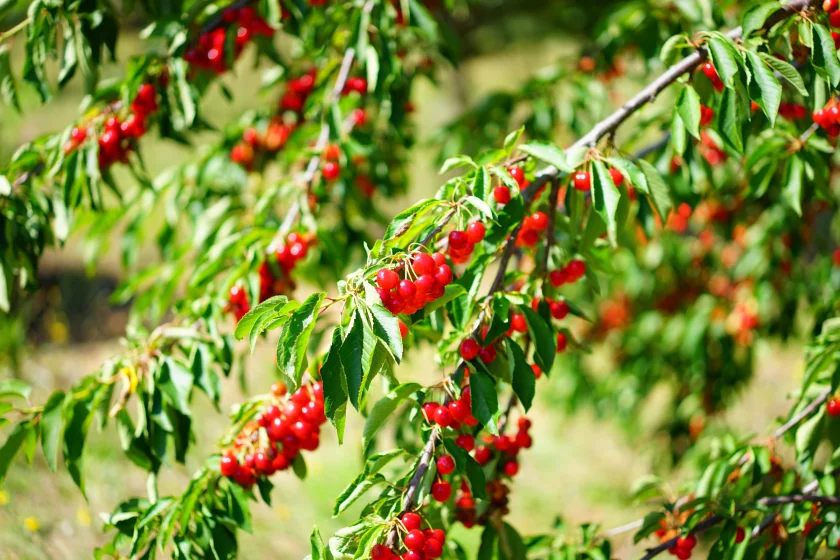Sweet cherries are prized for their flavor, a balance of sweetness and acidity, but achieving consistent quality is challenging due to environmental and genetic variability.
While past studies focused on traits like size and color, the genetic basis of flavor components—sugars and acids—remains poorly understood.
Climatic conditions and ripening stages further complicate predictability, leading to uneven fruit quality.
In climacteric fruits like peaches, major genes for acidity are known, but sweet cherries, being non-climacteric, lack such insights. Additionally, consumer demand for sweeter, less acidic cherries underscores the need for genetic solutions.
Genetic investigations in sweet cherries
Based on these challenges, a deeper investigation into the genetic regulation of cherry flavor was essential.
Published on November 6, 2024, in Horticulture Research, a team from Clemson University and Spain’s CITA investigated the genetics of sweet cherry flavor using five populations (372 trees).
They measured sugars (glucose, fructose, sorbitol) and acids (malic, quinic) over two years, identifying 20 stable quantitative trait loci (QTLs).
Key findings include a major QTL on chromosome 4 for sweetness and one on chromosome 6 for acidity. The study, combining multi-family QTL mapping and haplotype analysis, provides the first genetic blueprint for flavor traits in this non-climacteric fruit.
Key results and implications
The study revealed that glucose and sorbitol are the most stable sugars, with sorbitol showing the highest heritability (0.73) and correlation to sweetness.
Malic acid, the dominant acid, had strong genetic control (heritability 0.58) and overlapped with titratable acidity QTLs on chromosome 6.
Notably, a "hotspot" on chromosome 4 co-located QTLs for sweetness, ripening time, and firmness, suggesting pleiotropic effects—genes influencing multiple traits.
For breeders, this means selecting for early ripening may inadvertently reduce sugar content, a critical trade-off.
Breeding applications and future directions
Haplotype analyses identified specific genetic variants (e.g., H4-a for high sugar; H6-c for high acidity) that can guide breeding.
The team also found candidate genes, like FUN_022609 (linked to vacuolar acid storage), offering molecular targets for manipulation.
Surprisingly, sucrose—a minor sugar in cherries—had distinct QTLs compared to peaches, highlighting species-specific regulation.
The research underscores the complexity of flavor genetics, with multiple minor QTLs contributing to traits.
While environmental factors caused yearly variability, the stable QTLs provide a robust foundation for marker-assisted breeding to enhance flavor consistency.
Expert insights and consumer impact
Dr. Ana Wünsch, senior author of the study, stated: "Our work bridges a critical gap in sweet cherry breeding by linking specific genetic markers to flavor traits.
The chromosome 4 and 6 QTLs are game-changers—they allow us to predict sweetness and acidity early in breeding programs.
Sorbitol’s stability is particularly exciting, as it offers a reliable target for improving sweetness regardless of environmental fluctuations."
This research equips breeders with tools to develop cherries tailored to market preferences, such as sweeter or less acidic varieties, faster and more efficiently.
By leveraging haplotype data, growers can select parent trees with optimal genetic profiles, reducing trial-and-error in orchards.
The study also opens avenues for gene-editing techniques to fine-tune flavor compounds. Beyond cherries, insights into non-climacteric fruit genetics could benefit crops like strawberries.
For consumers, the promise is clearer: consistently delicious cherries year-round.
Future work will validate candidate genes and explore interactions between ripening and flavor, ensuring climate-resilient quality in a warming world.
Text and image source: .newsgram.com
Cherry Times - All rights reserved












